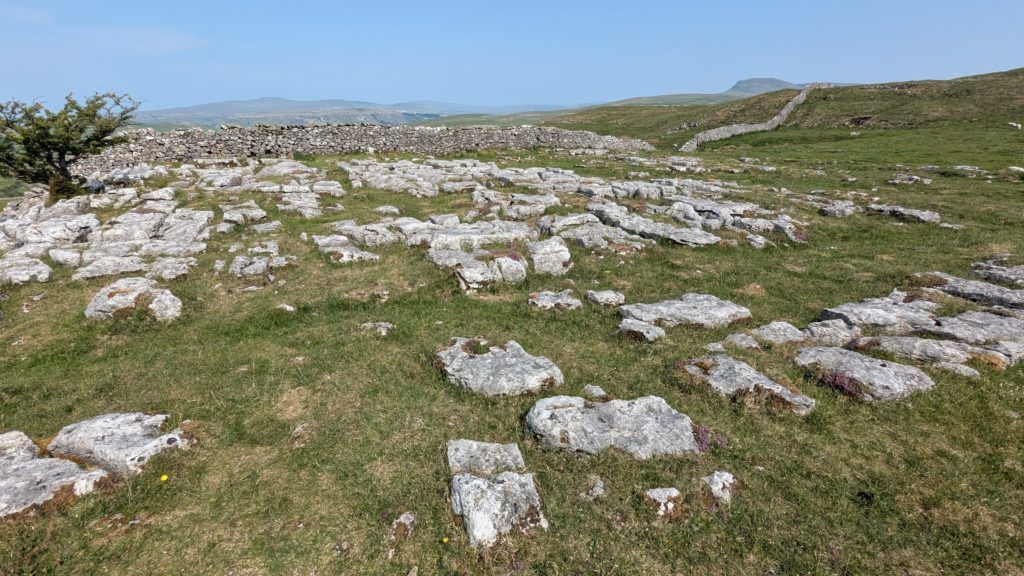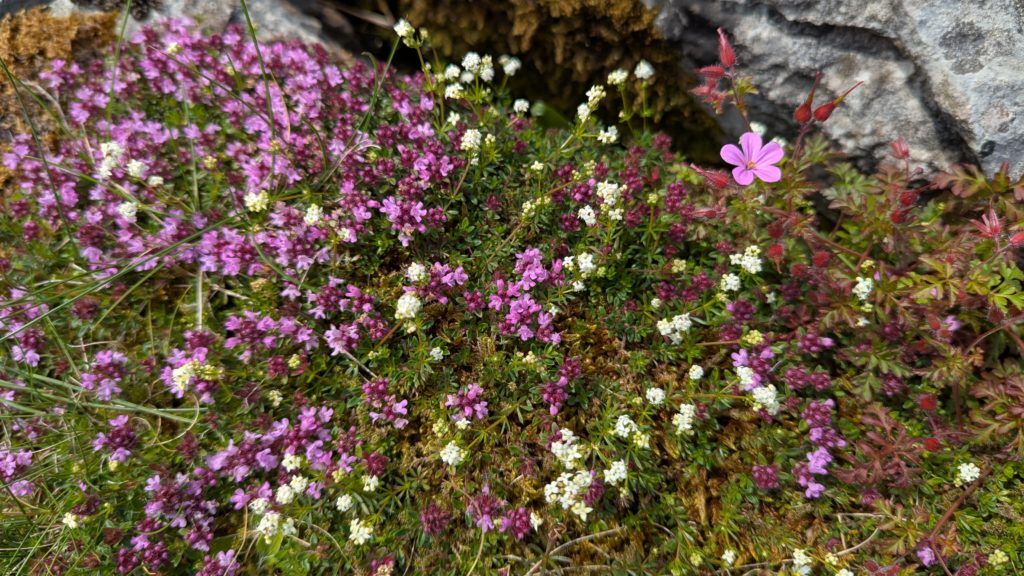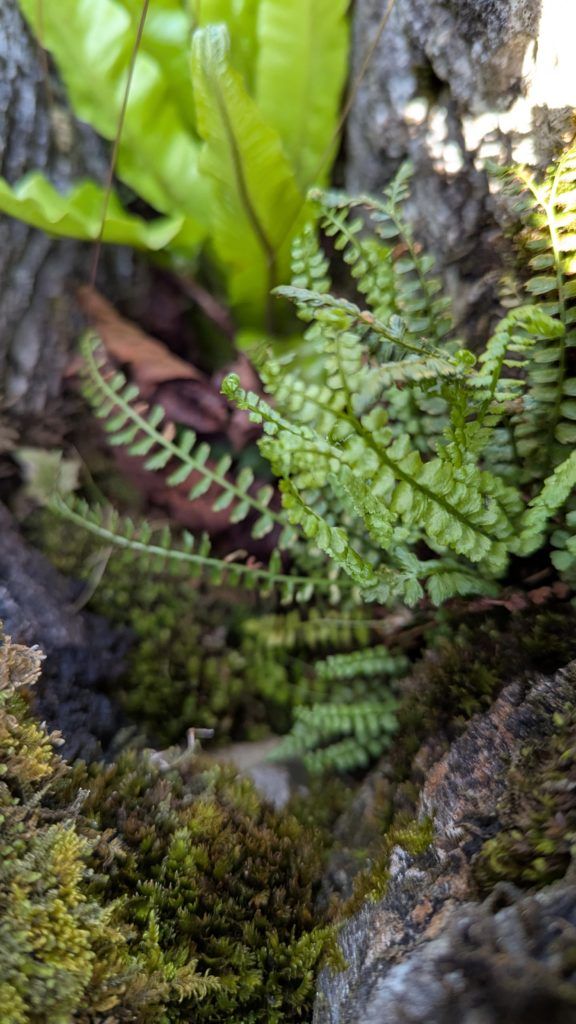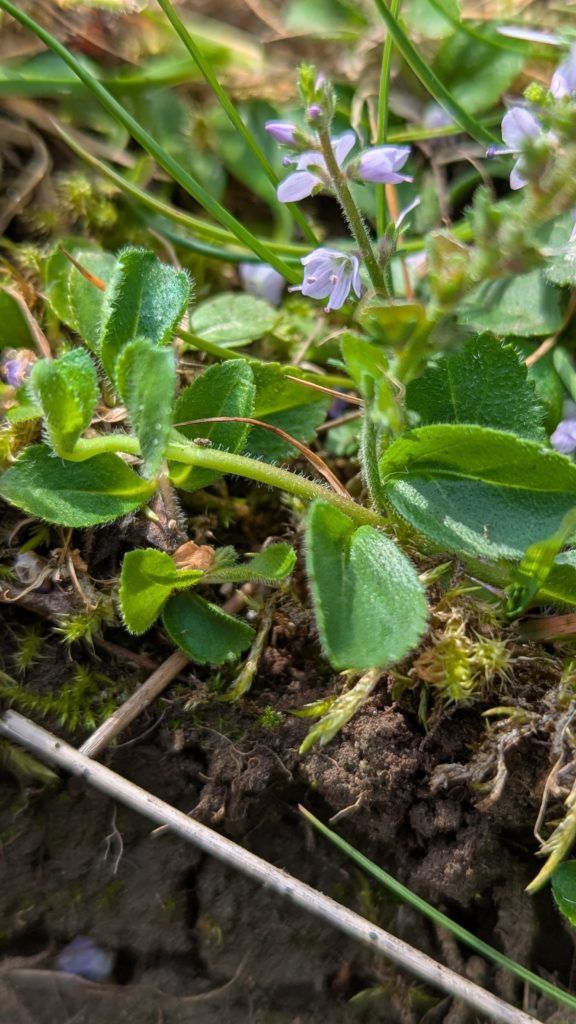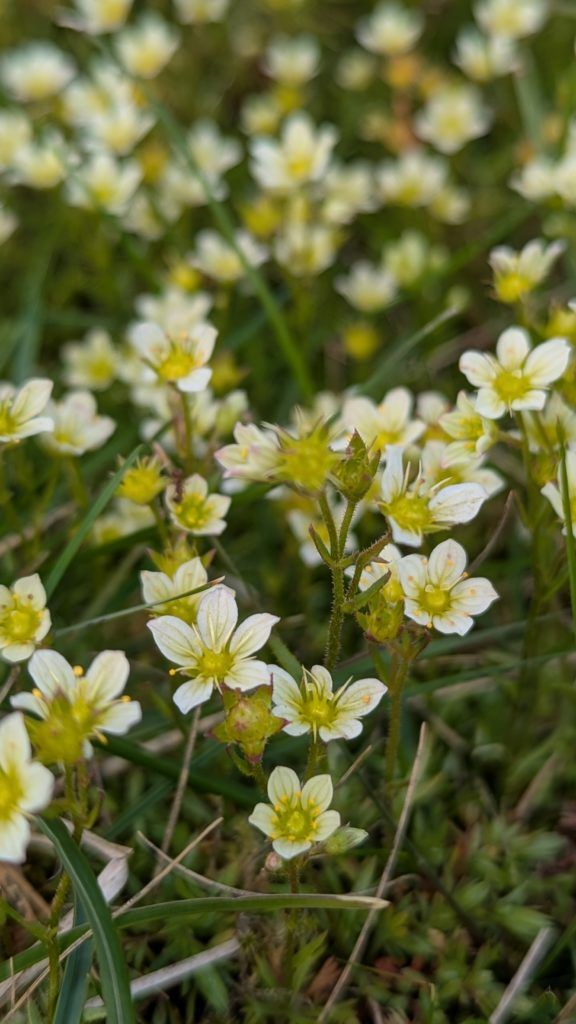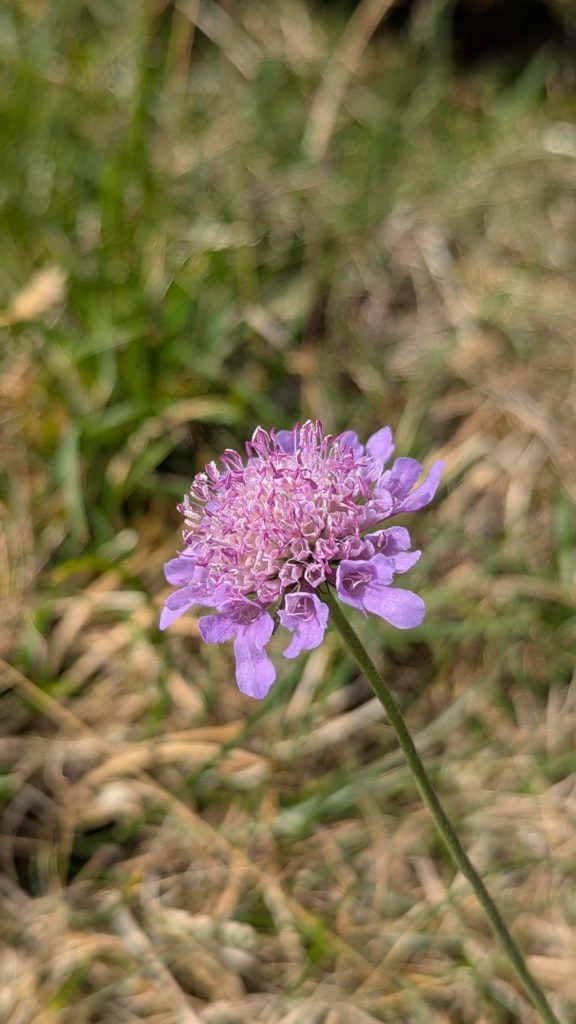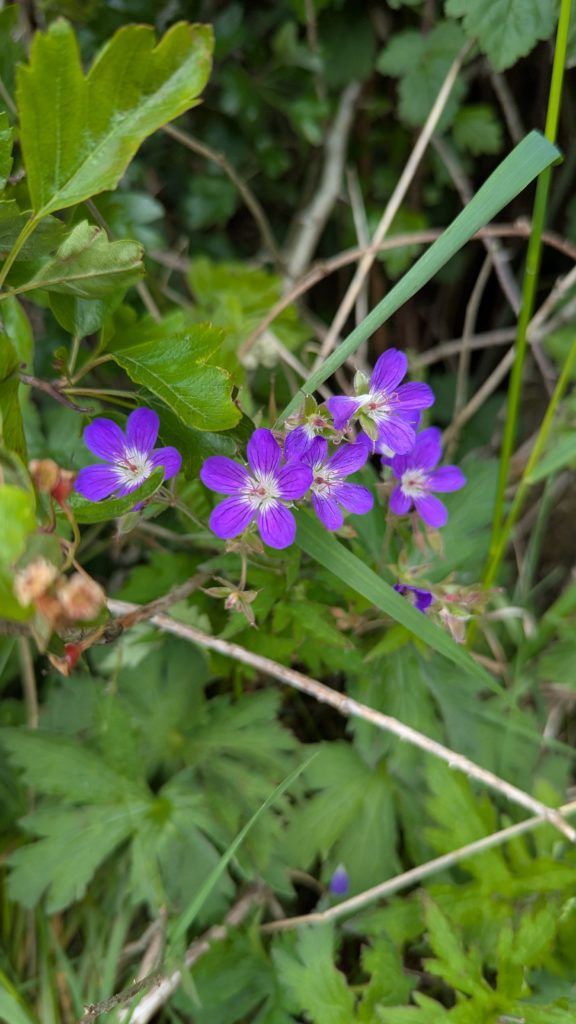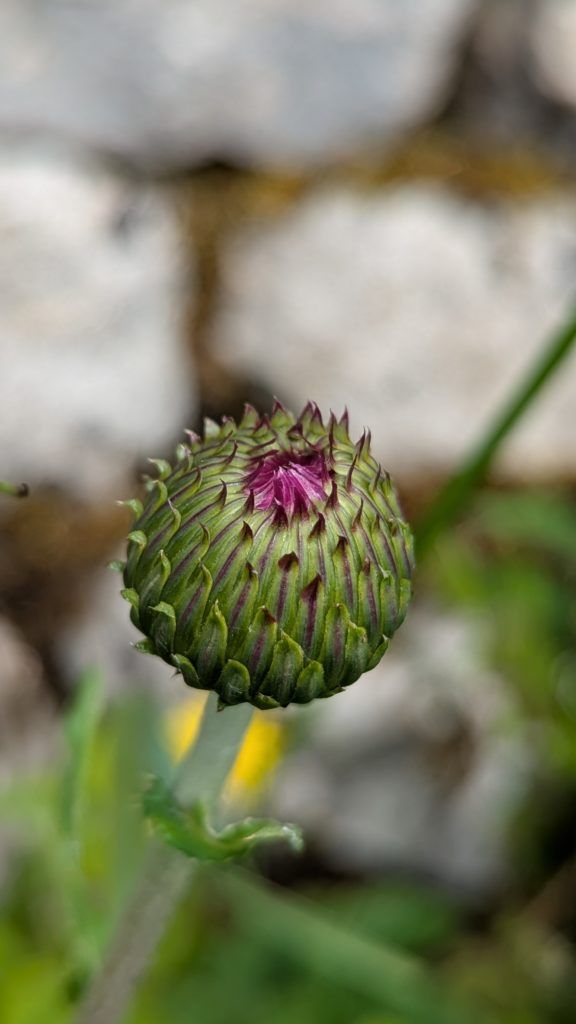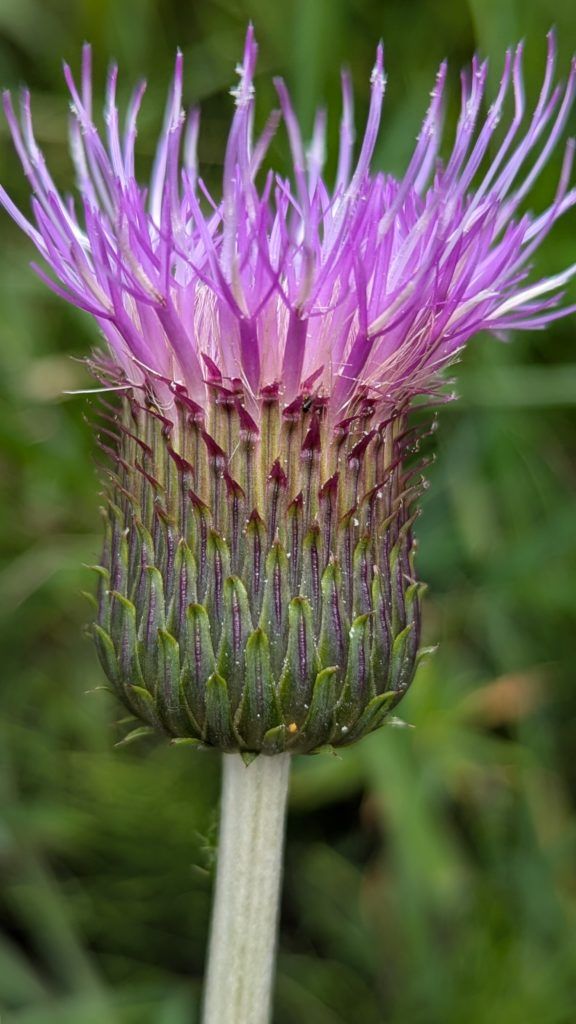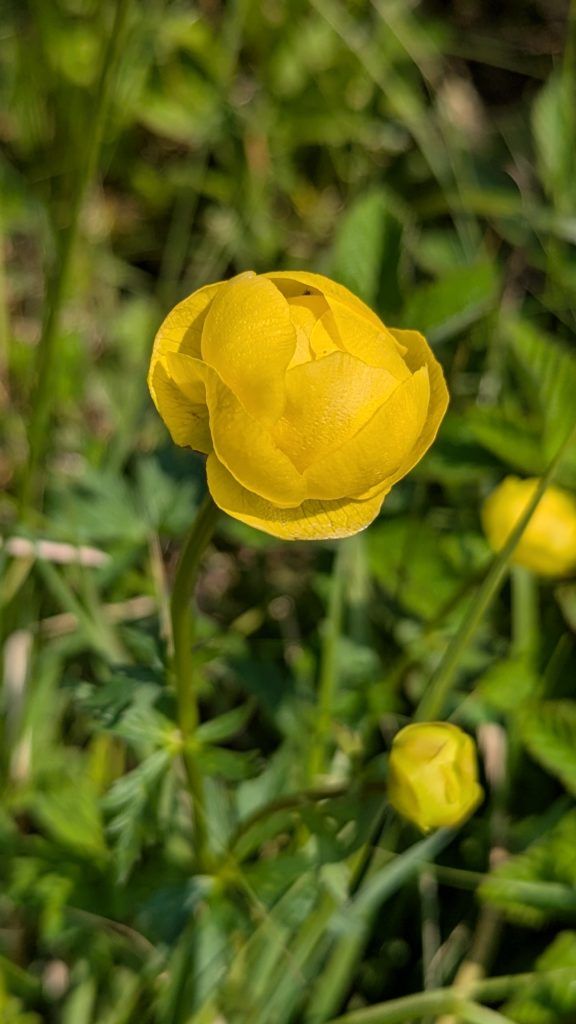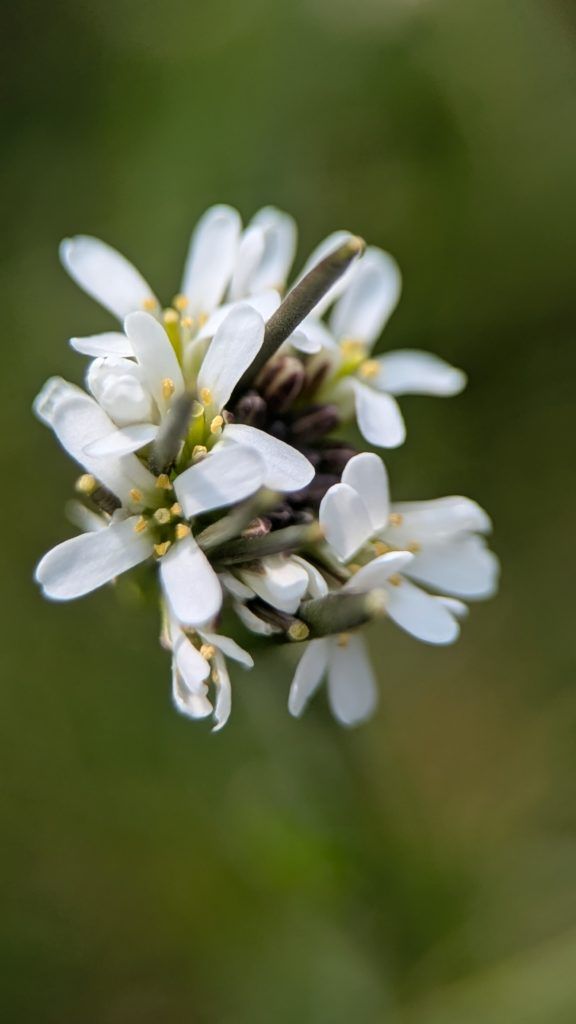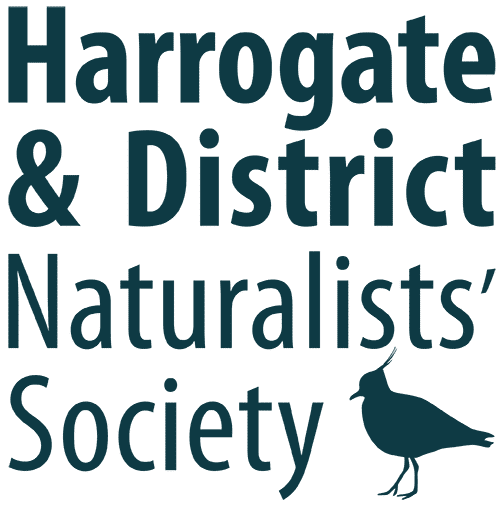We have tended to be unlucky with the weather on our field trips to the Dales – last July we did Cowside Beck in full winter clothing. But the forecast for our designated date for Winskill Stones was so dire that we took the decision to postpone until the following week, which meant five people were unable to come but the weather changed from freezing /blowing/ pouring to wall-to-wall sunshine!
At a beautiful viewpoint above the Ribble Valley, we met up with Andy Kearsey, Nature Reserves Manager for Plantlife; he described the role of the charity in creating Winskill reserve and saving it from the exploitation of its limestone pavement. We then explored the “clints” and “grykes” which make up the pavement – the grykes can be as much as 2 m deep and create a damp, shady habitat which is more like woodland compared with the surface of the clints. The dominant flora over the surface consisted of Wild Thyme and Limestone Bedstraw which created a beautiful and fragrant carpet. In the crannies were several species of fern, including the rare Green Spleenwort which Robin spotted after Andy had alerted us to its probable presence. The limestone grasses were in full flower, silky oat grasses, Crested Hair–grass, Sweet Vernal, Quaking and the dominant early-flowering Blue Moor-grass. More flowers are listed in the plant list below.
We next moved on to Malham Tarn, pausing on the way when Sheila reminded us to visit YWT’s smallest nature reserve, Globeflower Wood – 0.08 ha– this little triangle has no accessand can only be viewed by climbing halfway up the wall and peering over the top. Inside is a gem of damp limestone meadow, which was at its best with beautiful nodding Globeflower, Wood Cranesbill, Water Avens, Melancholy Thistle, all struggling slightly amongst rampant Meadowsweet,
We next moved on to the boardwalk at Malham Tarn. It was the perfect time to see it – the Globeflowers were still out and the sedges were flowering, but the leaves had not yet grown up enough to hide smaller plants. The richness of the flora was so great that it was quite hard to keep the party moving! It was a mosaic of wetland plants including orchids, Common and Marsh Valerian, Ragged Robin, Cuckooflower, thistles and cinquefoils, Bugle, horsetails – Robin showed us how to identify Water Horsetail – and of course the sedges, at least 10 species we were able to see and tentatively identify in a stroll of less than an hour. This site is well-known for the range of sedges and the drainage and grazing of the vegetation must be carefully managed. The 2 main species of Cotton-sedges with their white nodding heads decorated the entire area and the little water-course ran crystal clear. And it was even warm and sunny…
Many thanks to Andy for his giving up his time to introduce us to Winskill Stones. His enthusiasm for the site is inspiring!
Muff
